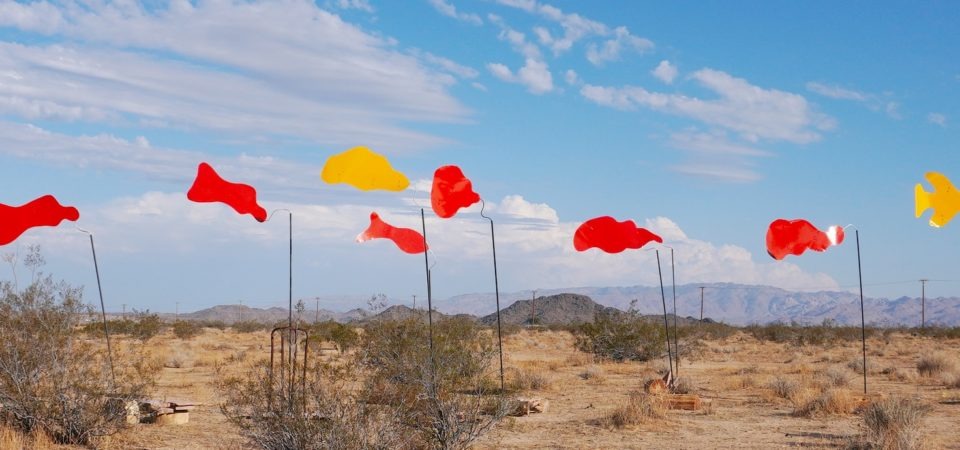I tried to help save the earth –or at least some small part of it – long before the idea of working as an artist ever occurred to me.
My efforts began in childhood (child of the 60s and 70s, War Is Not Healthy for Children and Other Living Things, etc.) and peaked in middle age via my role as chairperson of an environmental non-profit, which was dedicated to minimizing the negative effects of human activity in a relatively pristine corner of the Santa Monica Mountains, in Los Angeles County.
Our group had two main points of attack: first, educating community members about local problems like light pollution, the unintended effects of pesticides on non-target species, and septic tank health; second, political advocacy, which mostly meant lobbying government officials and other land managers on behalf of all the human and non-human life around us. While we had some laudable successes on both fronts, they were mostly due to the remarkable commitment of a very small handful of dedicated volunteers – generally, they were older folks, who had grown up in a more activist era, and specifically older women, who years ago, supported by working husbands, developed the habit of working without pay for the good of the community.
The few people I knew who did not fit this description, but who were nevertheless willing to spend significant time and effort working to protect the natural world for no pay, were, like me, motivated by a deep, lifelong love and appreciation for the natural world. I don’t believe that this feeling of connection to nature is something that can be taught or argued – we are (hopefully) exposed to insects, the ocean, and stars, and our responses to these phenomena fall somewhere on a spectrum of intensity and meaning; some of us might feel revulsion, or fear, or nothing at all, while others might experience the most powerful and significant feelings they will ever know. And of course, most people fall somewhere in the middle.

Woven Windows. 2022. Eucalyptus and tamarisk. Aligned so that the windows framed a rising full moon / solar eclipse. Part of a larger project done in collaboration with community members, veterans, and native elders.
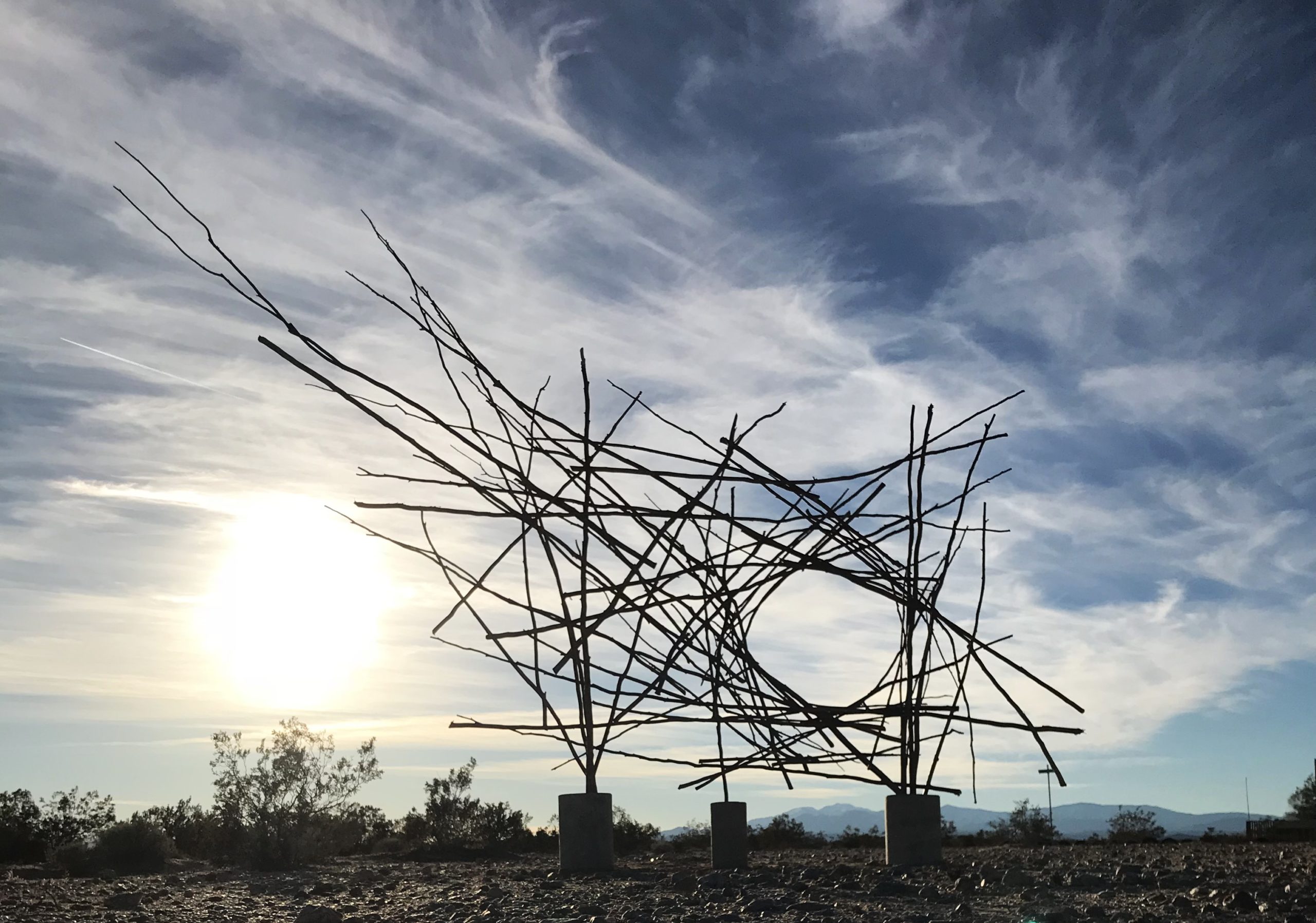
Comet. 2018. Woven eucalyptus saplings. The plant material for this and my other woven sculptures is gathered in collaboration with ecological restoration projects – to discourage/minimize the use of herbicide by land managers, I cut and remove their unwanted species. They get free labor and I get free art supplies. Many of the sculptures are temporary, the stick are used over and over again in different installations.
left: Flight Path. 2021. Steel wire. Evoking the way groups of vultures use thermal winds to gain elevation.
Middle: Nashville Birds. 2022. Wire. Permanent installation at Riverfront Park in Nashville, TN. Commission from the Nashville Tree Foundation, which sought to make use of dead/dying trees and call attention to the predations of the emerald ash borer.
Right: Ladder. 2020. Steel and wood.
So while I don’t disparage education or political activism, I have come to believe that the best thing I can do as an artist to help the planet is to catalyze or nurture in others this feeling of a strong connection to nature. To use the lifeboat analogy, there is only so much one can do to get folks to row together if their hearts are not really in it, especially if there is a long, difficult journey ahead. And if one or two fellow passengers feel compelled to paddle in the opposite direction, well, the boat is probably not going anywhere. (It’s so much easier to break things than it is to fix them.) So I make art to express myself, to enrich the lives of others, and, in the best case, to add a little bit to that wider pool of energy that vibrates with love and reverence for the natural world. Maybe that energy will move more of us to paddle together.
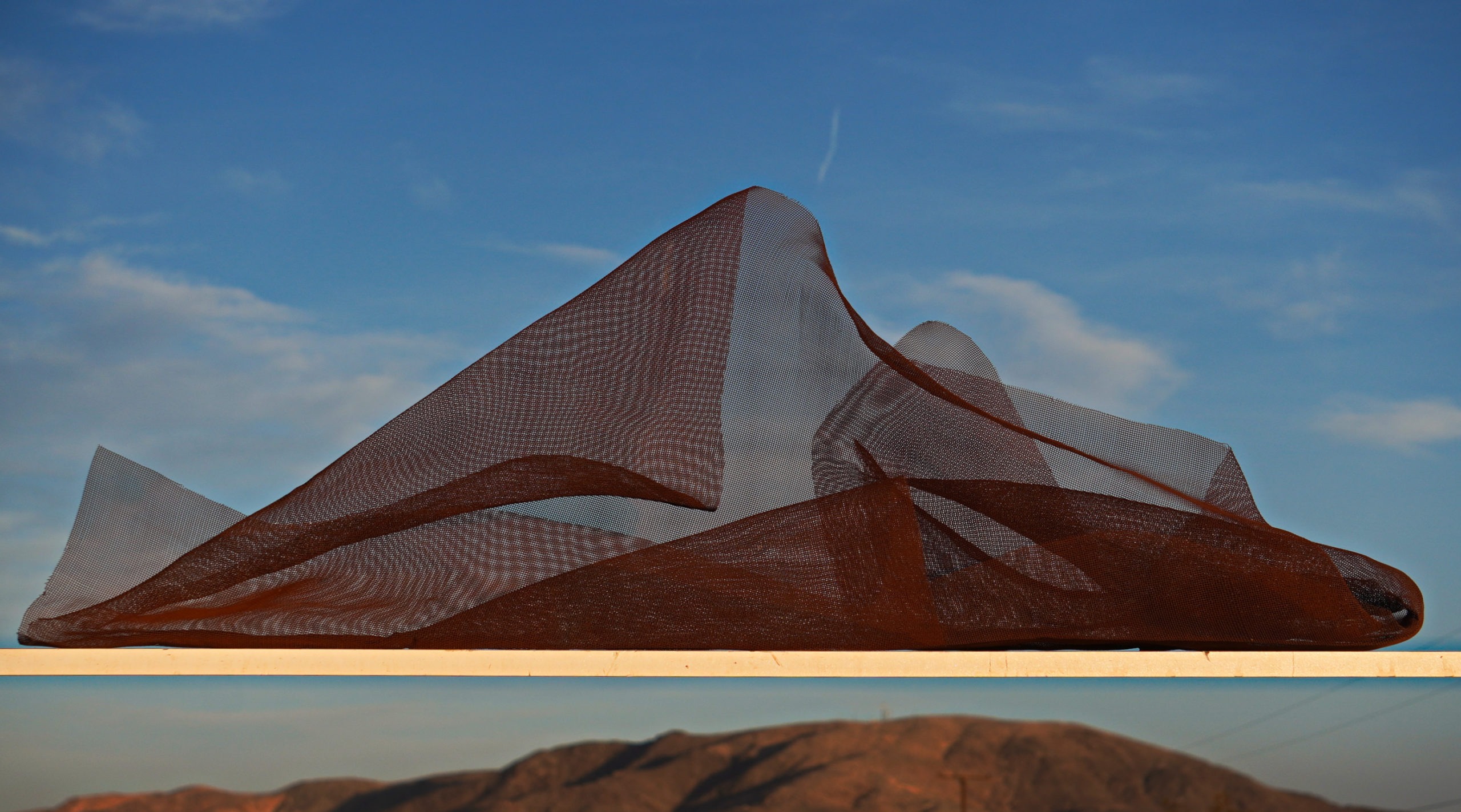
Screen. 2022. Folded window screen, scavenged from the Mojave desert.
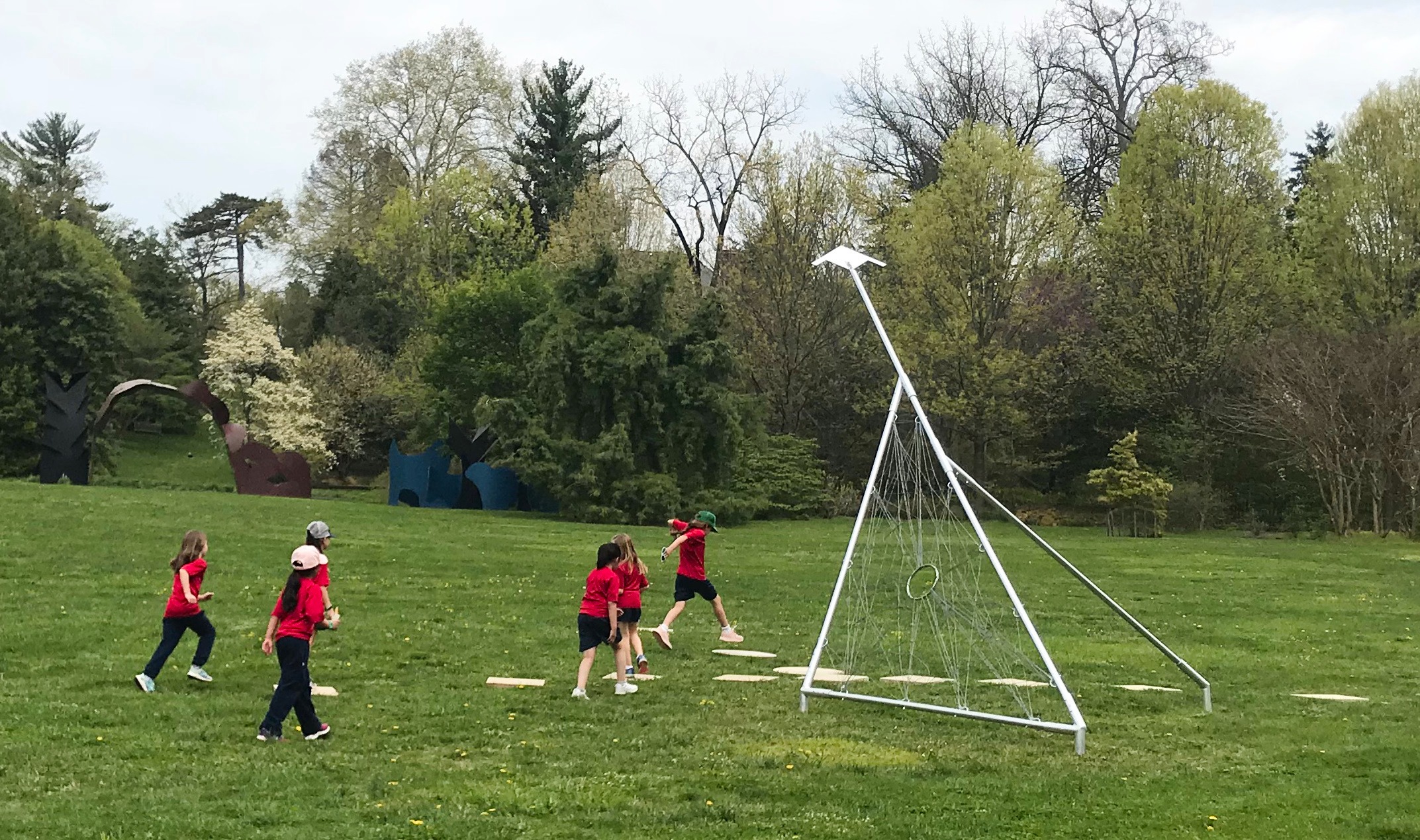
Gassho 1. 2018. Steel and limestone. Sun dial and solar calendar. Temporary installation at Morris Arboretum in Philadelphia, PA., currently located at Sky’s The Limit astronomy and nature park in Twentynine Palms, CA.
Having said all that, I am in fact pessimistic that our goodness and wisdom will prevail over our ignorance and greed; I don’t believe that the dismal trajectory we are on will change. That’s not a prediction or a statement of fact, it is more a confession of my state of mind. Whether or not human-caused mass extinction and mass environmental degradation lies ahead, it seems to me that the best thing for me to do right now, as an artist and a person, is to make the most of what is still beautiful and unadulterated in the world, and to celebrate these things, with and for others. Most of us have lost a loved one; grief is real, and should not be denied. But in addition to tears and depression, we have this other thing called “a celebration of life”, where we give attention to everything that we valued and continue to value about that person. I am advocating for a celebration of Life, all life — an ongoing, multi-faceted focus on what we love about the natural world, an appreciation for the real magic and real miracles of this planet and universe. It might help. I might not help. But I don’t think it will hurt. And if some entity in the future looks back at this era, I hope they will say about us, at least they appreciated what they had, and paid proper respect.

Wildflowers. 2021. Steel, stone, and wood. Modular, mobile, landscape-sized installation.
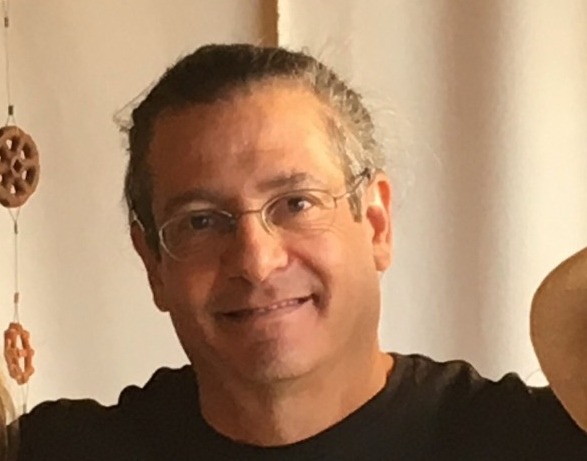
Ben Allanoff is an artist based in Joshua Tree, CA, working primarily with plant material, steel, wire, and found objects. He creates large scale temporary and permanent installations, working with public parks, gardens, and other agencies and institutions; he also makes complimentary smaller scale sculptures and prints. Allanoff grew up near Philadelphia, PA and graduated from Duke University. Prior to his career as a visual artist he worked in film and television, and ran a community-based environmental non-profit devoted to minimizing the negative impacts of human activity on sensitive habitats near the City of Los Angeles.
Ben allanoff’s website.
Instagram page.
This article is part of the MAHB Arts Community‘s “More About the Arts and the Anthropocene”. If you are an artist interested in sharing your thoughts and artwork, as it relates to the topic, please send a message to Michele Guieu, Eco-Artist and MAHB Arts Director: michele@mahbonline.org.
Thank you. ~

